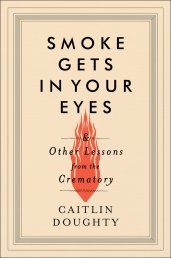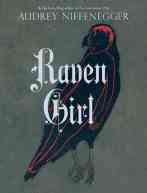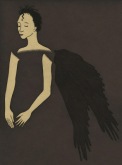 Jean Vanier began a worldwide movement in 1964. While living in northern France, Vanier invited two men, both intellectually disabled, to live with him. In time, what began as a gesture of friendship and hospitality, developed into nearly 150 residential communities around the world. Continue reading
Jean Vanier began a worldwide movement in 1964. While living in northern France, Vanier invited two men, both intellectually disabled, to live with him. In time, what began as a gesture of friendship and hospitality, developed into nearly 150 residential communities around the world. Continue reading
Category Archives: Body
Losing Religion, Finding Self in Thompson’s “Blankets”
 Stories permeate religious discourse, and among the most important stories in the history of Christianity are those which recount the life converted. Shared features have emerged over time—a search for meaning, a recognition of self-limitation, choices that signal self-denial and dependence on another. These moments, which reappear through time and across cultures, signal shared understanding of faith and community, and provide theologically rich sources of reflection on God and the self. But while some evangelical conversion narratives became formulaic in the eighteenth and nineteenth centuries, many recent “spiritual autobiographies” or “life writings” have broken convention with remarkably powerful results. Continue reading
Stories permeate religious discourse, and among the most important stories in the history of Christianity are those which recount the life converted. Shared features have emerged over time—a search for meaning, a recognition of self-limitation, choices that signal self-denial and dependence on another. These moments, which reappear through time and across cultures, signal shared understanding of faith and community, and provide theologically rich sources of reflection on God and the self. But while some evangelical conversion narratives became formulaic in the eighteenth and nineteenth centuries, many recent “spiritual autobiographies” or “life writings” have broken convention with remarkably powerful results. Continue reading
Death, Bodies, and Smoke Gets in Your Eyes
 When I was an adjunct English professor I especially enjoyed an assigned reading on all the strange and, let’s be honest, disturbing things morticians do to a body after death. In the United States, the practices surrounding death, wakes, and funerals are strange to say the least. In short, making a person’s body fit for viewing days after decay has begun is no easy task. Blood’s gotta go. Eyelids need to stay shut. Makeup is required. Continue reading
When I was an adjunct English professor I especially enjoyed an assigned reading on all the strange and, let’s be honest, disturbing things morticians do to a body after death. In the United States, the practices surrounding death, wakes, and funerals are strange to say the least. In short, making a person’s body fit for viewing days after decay has begun is no easy task. Blood’s gotta go. Eyelids need to stay shut. Makeup is required. Continue reading
Niffenegger’s Raven Girl and the Image of God
 Twice, in the short life of this blog, I have written on Audrey Niffenegger’s synthesis of visual and poetic arts. The Night Bookmobile—a terrifying exploration of the “dark side of reading”—first captured my attention. Later, I compared her work to William Blake in the imaginative The Adventuress and The Three Incestuous Sisters, describing her creations as “stories of anger, resentment, love, longing, loss, and escape . . . morality tales of transformation embodied in the strange and paranormal.”
Twice, in the short life of this blog, I have written on Audrey Niffenegger’s synthesis of visual and poetic arts. The Night Bookmobile—a terrifying exploration of the “dark side of reading”—first captured my attention. Later, I compared her work to William Blake in the imaginative The Adventuress and The Three Incestuous Sisters, describing her creations as “stories of anger, resentment, love, longing, loss, and escape . . . morality tales of transformation embodied in the strange and paranormal.”
Her latest graphic novella, Raven Girl (Abrams ComicArts, 2013) continues to shape Niffenegger’s growing reputation as a leading figure in contemporary storytelling. The book originated in a request from the Royal Ballet for a “dark” tale to be developed for production. A fairy tale at heart, Raven Girl follows a postman who falls in love with a raven (an intriguing reversal of Coleridge’s Mariner & Albatross). The two eventually have a child—a raven girl. She looks like a girl, that is, but her skeletal and other biological systems have some features that are more bird than human. She cannot speak human languages, but neither can she fly. Raven Girl is an exploration of the bodily dysphoria the girl experiences and the quest to attain functional wings of her own.
 Among several themes raised in the story, Niffenegger’s work encourages reflection on the meaning of the image of God in the person. Through the voice of an antagonist—a young man who falls in love with the raven girl, only to violently oppose her efforts to change her body through surgery—Niffenegger challenges the belief that our bodies should be treated as immutable, in some sense, due to their creation in the divine image.
Among several themes raised in the story, Niffenegger’s work encourages reflection on the meaning of the image of God in the person. Through the voice of an antagonist—a young man who falls in love with the raven girl, only to violently oppose her efforts to change her body through surgery—Niffenegger challenges the belief that our bodies should be treated as immutable, in some sense, due to their creation in the divine image.
Readers of Raven Girl who reduce the story to a simplistic morality play of contemporary bioethics, however, may fail to see other opportunities for literary and theological reflection. While the tale invokes a discussion of body and identity, Raven Girl also encourages meditation on the relationship between the divine image and creation as a whole.
Raven Girl is, in many ways, a tragic story of isolation and estrangement—from the self and others. The postman and raven fall in love, but they do so while experiencing, to varying degrees, alienation from their respective communities. The raven girl, though surrounded by other children, grows up without friends and others who nurture, shape, and care for her development. Loneliness, isolation, and longing surround these characters, even amidst moments of tranquility and joy.
While the bodily dimension of the story deserves our attention—our bodies, and what we do with them, matter—readers should attend to the social dimension of the story, too. True humanity is discovered in the demonstration of love—the love of God, neighbor, and all creation. In fact, Raven Girl unexpectedly affirms the deeply Christian belief in created relationality in its final pages. The love of the raven prince who seeks out the mysterious girl affirms a wider vision of reconciliation, community, and restorative relationships. Through their love, the enmity between alienated beings is put to rights.
Gazing at “Royal Bodies”: On Kings, Queens, and Country Stars
 Hilary Mantel’s recent London Review of Books lecture “Royal Bodies” challenges the pervasive temptation to transform people into objects of the pervasive public gaze.
Hilary Mantel’s recent London Review of Books lecture “Royal Bodies” challenges the pervasive temptation to transform people into objects of the pervasive public gaze.
Mantel recalls an encounter with the Queen at Buckingham Palace. Everyone avoids her, sweeping aside in her royal presence—except for Mantel, who sees through her in an instant of penetrating vision: “for a moment she had turned back from a figurehead into the young woman she was, before monarchy froze her and made her a thing, a thing which only had meaning when it was exposed, a thing that existed only to be looked at.”
Mantel felt regret in that moment. She wasn’t looking at her, she explains, only the monarchy. Reversing the gaze, Mantel imagines the weary-eyed perspective of the Prince of Wales after yet another public spectacle: “You see that your life is a charade, that the scenery is cardboard, that the paint is peeling, the red carpet fraying, and if you linger you will notice the oily devotion fade from the faces of your subjects, and you will see their retreating backs as they turn up their collars and button their coats and walk away into real life.”
The curiosity to see through others has left once vibrant individuals not as disembodied souls, but de-spirited bodies, subject to the appetite of public interest, devoid of vitality.
 And is this really any different from the consumer culture that surrounds celebrities and professional athletes? Just the other day, famed country musician Mindy McCready took her own life, having battled publicly with addiction and loss for years. Dr. Drew Pinsky, physician and television host, claims she “became so fearful of the stigma and the way people were responding to her being hospitalized that she actually checked herself out prematurely . . . it didn’t have to go down like this.” A royal life, indeed.
And is this really any different from the consumer culture that surrounds celebrities and professional athletes? Just the other day, famed country musician Mindy McCready took her own life, having battled publicly with addiction and loss for years. Dr. Drew Pinsky, physician and television host, claims she “became so fearful of the stigma and the way people were responding to her being hospitalized that she actually checked herself out prematurely . . . it didn’t have to go down like this.” A royal life, indeed.
It doesn’t take tragedy to recognize the slow spiral downwards. Who in the United States hasn’t found the intense media celebration of Michael Jordan’s fiftieth birthday just a bit uncomfortable? So much attention to a man . . . was he the greatest player ever? Could he still play on an NBA team today? But stop and think for a moment: Would anyone be surprised to discover that Jordan finds the celebration-as-spectacle surrounding his aging body entirely humiliating?
Mantel, ever the artist, closes her lecture with words about kings and queens—and perhaps country singers and athletes, too: “Cheerful curiosity can easily become cruelty. It can easily become fatal. We don’t cut off the heads of royal ladies these days, but we do sacrifice them, and we did memorably drive one to destruction a scant generation ago. History makes fools of us, makes puppets of us, often enough. But it doesn’t have to repeat itself.”
The lesson, for me, is clear: we can still have our heroes, still celebrate our symbols of greatness or beauty or accomplishment. Yet these symbols of power and greatness remain people—bodies and souls and spirit and the muck that makes us fully and fallibly human. Mantel has this much right: “much lies within our control. I’m not asking for censorship. I’m not asking for pious humbug and smarmy reverence. I’m asking us to back off and not be brutes.”